Project Deadline Management: 9 Steps to Always Deliver Projects on Time
Learn the essentials of deadline management and follow 9 proven steps to keep projects on track, meet every milestone, and deliver on time without the last-minute rush.
We’ve all been there – deadlines sneak up, and suddenly, everything feels out of control. Even with the best plans, delays, shifting priorities, and resource issues can throw things off track. When that happens, projects miss deadlines, budgets get stretched, and client relationships can take a hit.
Effective project deadline management is all about creating a realistic plan, making the best use of your resources, spotting potential issues before they become problems, and keeping the whole team aligned from start to finish.
In this guide, we’ll break down what project deadlines are, why managing them matters, and 9 proven steps you can follow to deliver projects on time. Whether you’re handling a small task or a large team project, these tips will help you avoid the stress of last-minute scrambles and hit your deadlines with confidence.
What is the Project Deadline?
A project deadline is the specific date or time by which a task, milestone, or the entire project must be completed. It serves as a fixed target that guides planning, resource allocation, and progress tracking. Clear deadlines create structure, set expectations, and keep teams focused on delivering results.
In project management, deadlines generally fall into three categories:
- Hard Deadlines – Fixed and non-negotiable dates, such as a product launch, regulatory filing, or contractual delivery date. Missing these can have serious consequences.
- Soft Deadlines – Flexible timelines used for internal checkpoints or reviews. They help track progress but can be adjusted if priorities shift.
- Rolling Deadlines – Recurring or ongoing due dates, common in agile or iterative projects where deliverables are released in cycles.
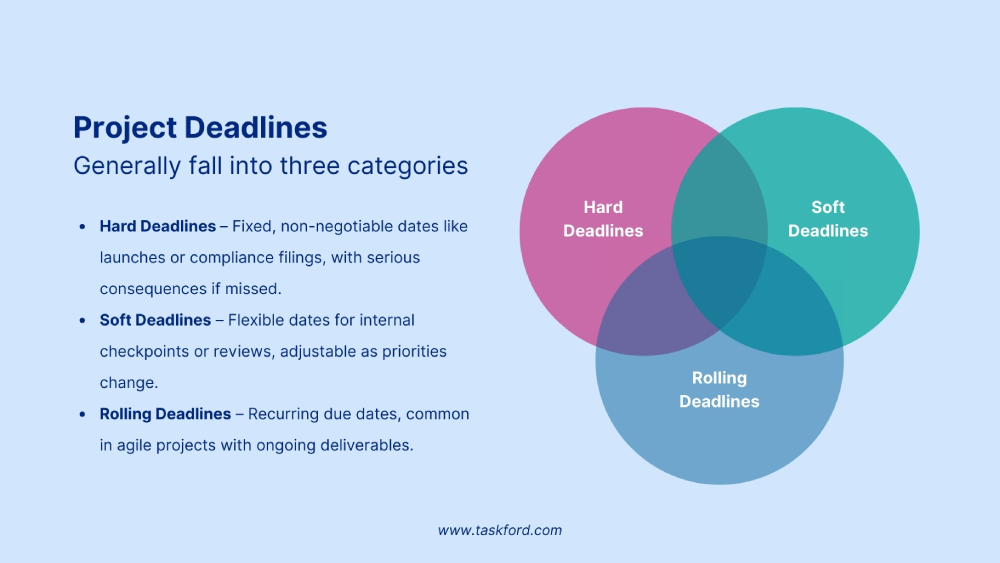
Recognizing the type of deadline you’re working with helps you plan realistically, manage resources effectively, and avoid last-minute pressure.
What is Project Deadline Management?
Project deadline management is the process of planning, organizing, and controlling tasks to ensure they are completed within the agreed-upon timeframes. It goes beyond simply setting a date — it’s about creating a realistic schedule, allocating resources effectively, anticipating challenges, and keeping all stakeholders aligned until the work is delivered.
Key elements of project deadline management include:
- Setting realistic deadlines by considering the project scope, available resources, and potential dependencies.
- Breaking down work into milestones makes it easier to track progress and stay focused on key goals.
- Prioritizing critical tasks that have the most significant impact on meeting the project’s delivery date.
- Regularly monitoring progress and adjusting plans when necessary to stay on course.
- Communicating clearly with the team so everyone understands their roles, responsibilities, and timelines.
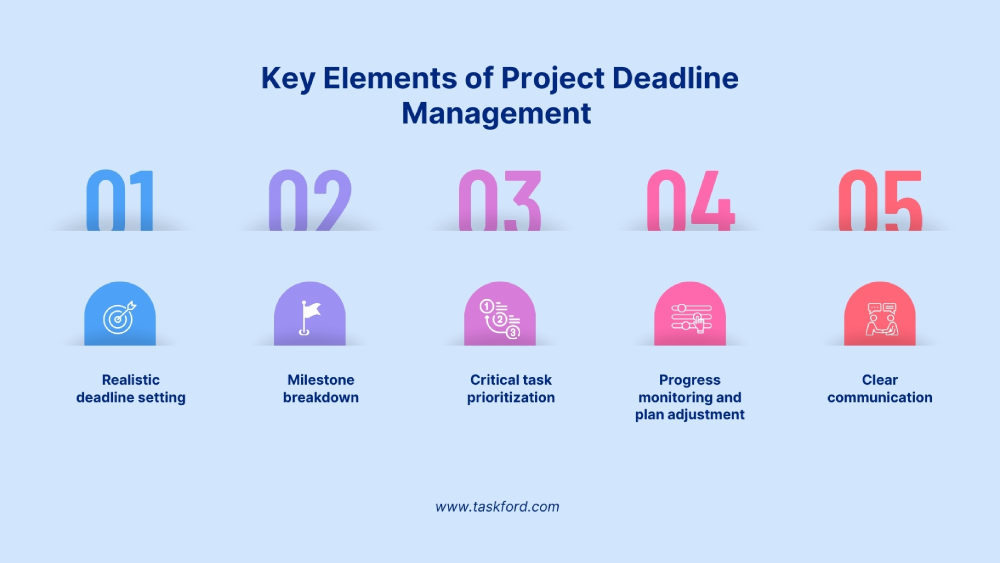
Strong deadline management ensures projects are completed on time without sacrificing quality, reducing stress for the team, and building trust with clients or stakeholders.
Why Project Deadline Management Matters
In any project, deadlines aren’t just boxes to tick on a calendar — they represent agreements, expectations, and the foundation of trust between teams, clients, and stakeholders. A missed deadline can ripple through the entire project, causing budget overruns, damaged credibility, and unnecessary stress. On the other hand, strong deadline management keeps the work predictable, efficient, and far less stressful for everyone involved.
Here’s why it’s so critical:
1. Keeps Projects on Track and Aligned
A well-managed deadline acts as a guiding compass for the entire project. By defining key dates for milestones and deliverables, the team can easily see where they stand at any point. This makes it possible to spot delays early and take corrective action before they become bigger problems.
2. Builds Trust and Strengthens Relationships
Clients and stakeholders rely on your ability to deliver when promised. Consistently meeting deadlines shows reliability and professionalism, which helps secure repeat business and positive referrals. Internally, it boosts confidence between team members and leadership.
3. Prevents Cost Overruns and Scope Creep
Delays don’t just push the calendar — they often increase costs. Extended timelines may require additional labor, overtime pay, or even missed revenue opportunities. Effective deadline management keeps scope and timing under control, preventing the project from drifting off course.
4. Improves Team Focus and Productivity
Without clear deadlines, teams can lose focus, working on less important tasks or spreading effort too thin. When deadlines are well-communicated, team members know exactly what to prioritize, which keeps productivity high and eliminates guesswork.
5. Enables Better Resource Allocation
Deadlines allow project managers to allocate resources — people, tools, and budget — in the right place at the right time. This prevents bottlenecks and ensures no one is overloaded or sitting idle.
6. Reduces Stress and Last-Minute Rush
Poorly managed timelines often lead to frantic work in the final days. With a structured deadline management process, teams can spread the workload evenly, reducing stress and improving overall quality.
In short, project deadline management is more than just hitting a date — it’s about creating a rhythm that ensures consistent progress, stable costs, and strong professional relationships. It’s the backbone of successful project delivery.
Step-by-Step Guide to Delivering Projects on Time
Meeting deadlines isn’t about working faster — it’s about working smarter. By following these nine steps, you can create a structured, realistic plan that keeps your project moving forward without unnecessary stress.
Step 1: Define Clear Objectives and Scope
A well-defined scope and clear objectives act as the project’s blueprint. They help prevent scope creep — when additional, unplanned work sneaks in and pushes your project off schedule. Clarity ensures that every stakeholder understands what success looks like, what’s included, and just as importantly, what’s not.
How to Do It:
- Set SMART goals (Specific, Measurable, Achievable, Relevant, Time-bound) ensures your deadlines are clear, actionable, and realistic. This framework helps you avoid vague targets and instead focus on what truly matters for project success. Example: Instead of “build a website,” aim for “launch a five-page e-commerce website by June 30.”
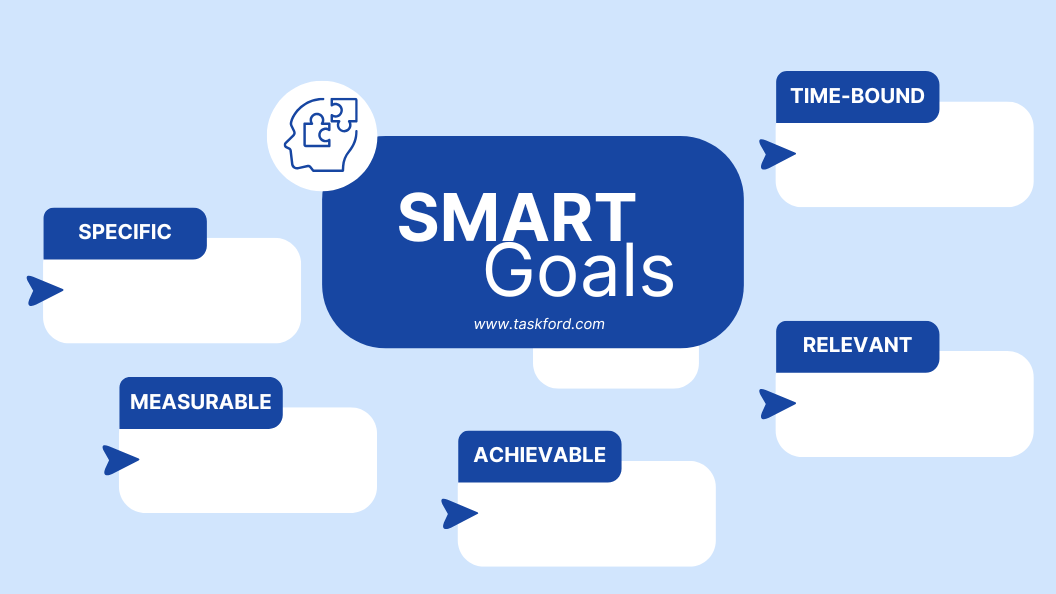
- Document the scope with deliverables, exclusions, and success criteria. Documenting the scope of your project is key to managing expectations and ensuring the team knows exactly what is expected. The project scope should clearly outline deliverables, what is out of scope, and the success criteria for each milestone.
- Share with the team to align efforts and avoid rework. This ensures that everyone understands their individual responsibilities and the timeline they’re working within.
Example, for a marketing campaign, the scope could be: “Create three social media ads and a landing page, excluding video content, to be delivered by July 15.”
Step 2: Break Down the Project into Milestones
Large projects can feel overwhelming, but breaking them into milestones creates clear checkpoints to track progress and maintain momentum toward the project deadline.
How to Do It:
- Identify key phases or deliverables (e.g., research, design, testing) and assign interim deadlines to each.
- Ensure milestones are measurable and tied to specific outcomes, like “complete wireframes by week 3.”
- Align milestones with stakeholder expectations to facilitate timely feedback and approvals.
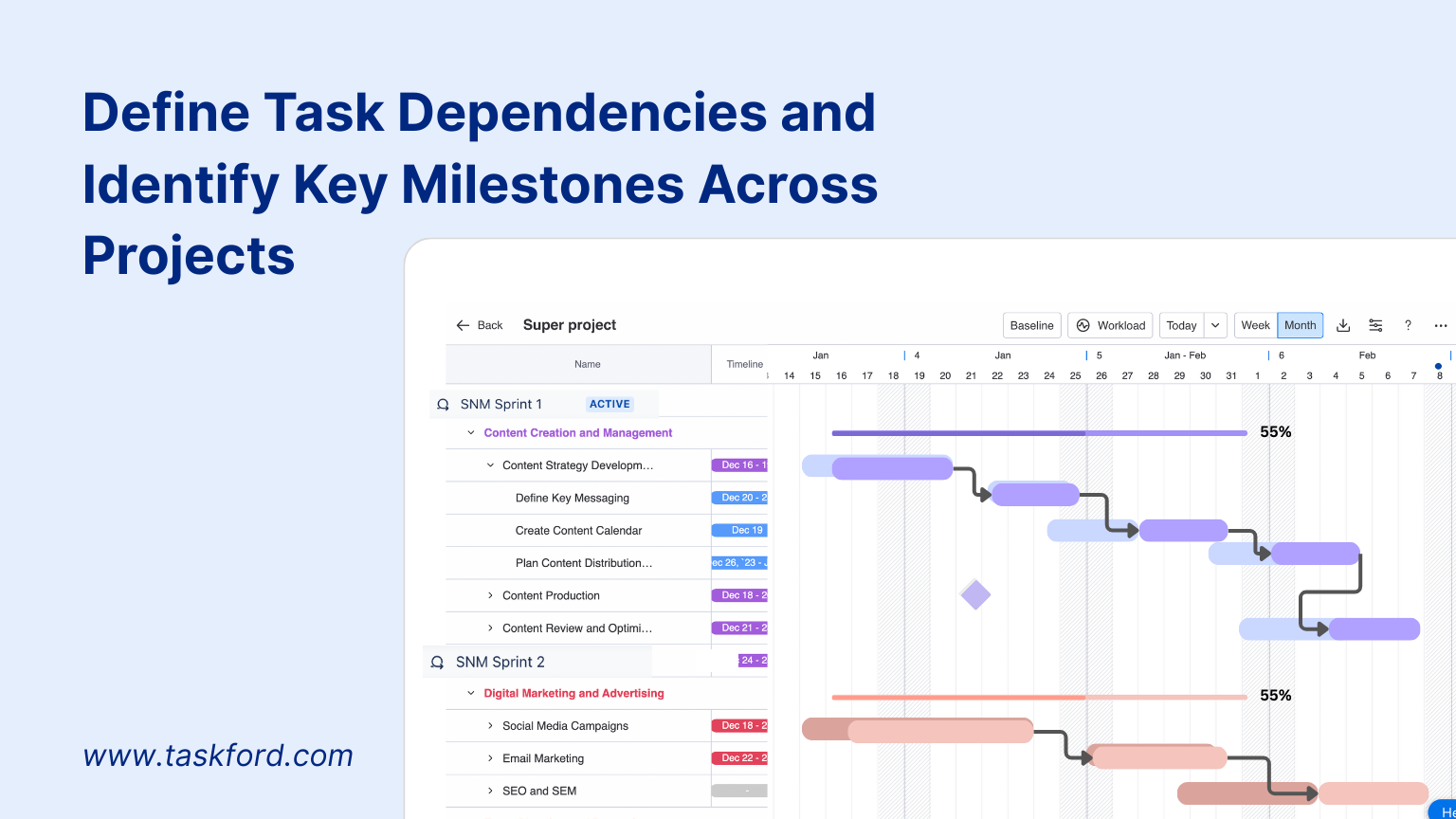
For example, for a product launch, milestones could be: design completion by May 10, testing by June 5, and final release by July 1.
Step 3: Prioritize Tasks Strategically
Not all tasks are created equal. Strategic prioritization ensures your team focuses on high-impact activities that drive the project toward the project deadline.
How to Do It:
- Use prioritization methods like MoSCoW or the Eisenhower Matrix. These frameworks help you categorize tasks based on their urgency and importance.
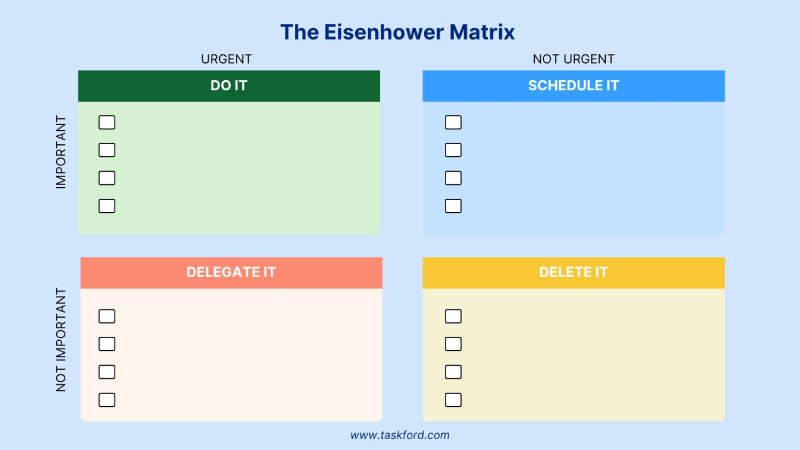
- Next, focus on tasks that are both high in importance and time-sensitive. These are the activities that directly affect your project’s timeline, so they should take precedence.
- For tasks that have little to no impact on the deadline, defer or drop them. This prevents distractions and keeps your team focused on what truly matters.
Example:
In a marketing campaign, prioritize creating ad copy and graphics before secondary activities like A/B testing variations.
Step 4: Allocate Resources and Manage Capacity
Deadlines can only be met if the right people, tools, and budget are available at the right time. Poor resource allocation often leads to bottlenecks, burnout, and missed deadlines — even if the plan is solid.
How to Do It:
- Assign tasks based on the specific skills and availability of each team member. This ensures that everyone is working on tasks they’re best suited for, and it prevents overloading individuals with too much work.
- Monitor workloads to prevent burnout or bottlenecks before they become major issues.
- To keep everything on track, use project management tools to track capacity and resource allocation.

Example:
If a designer is handling multiple projects, adjust timelines or redistribute tasks to avoid delays in critical design deliverables.
Step 5: Identify and Monitor Critical Path Tasks
The Critical Path Method (CPM) is the sequence of tasks that directly determines your project’s finish date. If one of these tasks is delayed, the entire project deadline will be at risk. Knowing and tracking your critical path helps you spot issues early and apply resources where they matter most.
How to Do It:
- Map out the project timelines and identify tasks with no flexibility (zero float).
- Monitor these tasks frequently and resolve delays immediately.
- Allocate additional resources or adjust priorities to keep critical path tasks moving.
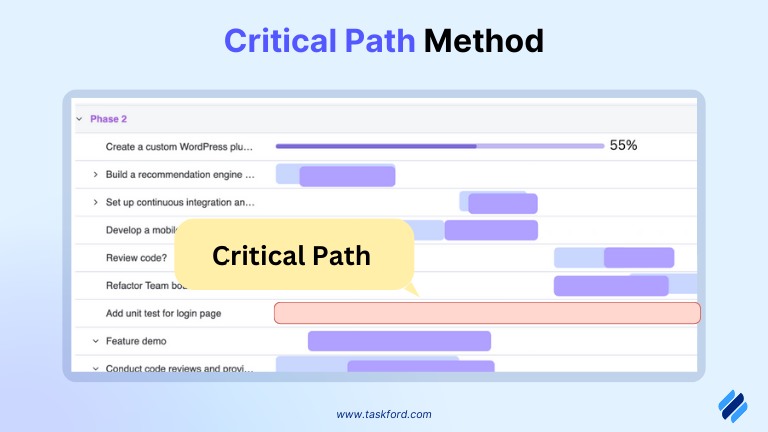
Example: In a software project, if user testing is on the critical path, any delay in gathering test data or feedback could push back the release. Extra testers or faster approval cycles can help keep things on track.
Step 6: Clarify Dependencies and Secure Commitments Early
Many project tasks depend on others being completed first. If one dependency slips, it can cause a chain reaction of delays. Addressing dependencies early ensures smooth handoffs and avoids last-minute surprises.
How to Do It:
- List all tasks and map which ones depend on others.
- Confirm timelines and responsibilities with all stakeholders, vendors, or partner teams.
- Build buffer time into your schedule for high-risk dependencies.

Example: If a marketing campaign can’t start ad design until the branding team delivers the new logo, ensure the logo delivery date is agreed upon and locked in early.
Discover Dependencies in Project Management: 4 Types Every Project Manager Should Know
Step 7: Manage Risks and Contingencies
Every project faces uncertainties — from resource changes to supply delays. The difference between staying on time and falling behind often comes down to how effectively you anticipate and prepare for project risks. Identifying these risks early allows you to put safeguards in place before they threaten your timeline.
How to Do It:
- Create a risk register: List potential risks and assess their impact on the project. This helps you prioritize which risks need more attention.
- Develop contingency plans for high-impact risks: For each major risk, outline clear actions to take if it happens, ensuring a quick and effective response.
- Add time buffers to your schedule: Account for potential delays by including buffer time, allowing you to absorb minor issues without affecting the overall deadline.
Example: If you’re relying on an overseas supplier for materials, plan for shipping delays by sourcing a backup vendor or ordering earlier than needed.
Step 8: Foster Regular Communication and Progress Monitoring
Clear, consistent communication keeps everyone aligned and accountable. Regular progress monitoring ensures that small issues are caught before they become major delays.
How to Do It:
- Hold weekly check-ins or daily stand-ups to review progress and blockers.
- Use project dashboards to give all stakeholders real-time visibility.
- Communicate changes to deadlines or priorities immediately.
Example: If a development sprint is behind schedule, raising the issue in a stand-up meeting allows the team to redistribute tasks or adjust priorities before the delay grows.
Learn more about how to write a Communication Management Plan to keep your project organized.
Step 9: Prioritize and Adjust Scope as Needed
Sometimes, meeting the deadline means making trade-offs. Adjusting the scope allows you to deliver on time without sacrificing the most critical project outcomes.
How to Do It:
- Reassess priorities when you notice timelines are at risk. Focus on what’s most critical to the project’s success.
- Defer non-essential features or deliverables to a future phase, ensuring that the core work is completed on time.
- Gain stakeholder agreement before making any changes to the scope, ensuring everyone is aligned and expectations are managed.
Example: If a mobile app launch is in danger of being delayed, you might release without certain non-essential features and add them in a later update.
Conclusion
Delivering projects on time isn’t about racing the clock — it’s about planning strategically, managing resources wisely, and staying adaptable when challenges arise. By setting clear objectives, breaking work into milestones, prioritizing tasks, and keeping a close eye on critical paths and dependencies, you create a project environment where deadlines are realistic and achievable.
Equally important is maintaining strong communication, proactively managing risks, and knowing when to adjust scope to protect delivery dates. These steps not only help you meet deadlines but also improve team productivity, strengthen stakeholder trust, and reduce last-minute stress.
Remember: deadline management is a habit, not a one-time task. The more consistently you apply these principles, the more reliably you’ll deliver — and the more your team and clients will trust you to get the job done.
Continue Reading
- Organizational Project Management
- How to Prioritize Tasks When There’s Too Much To Do
- Float Project Management: What Is It and How It Differs From Traditional Scheduling
Subscribe for Expert Tips
Unlock expert insights and stay ahead with TaskFord. Sign up now to receive valuable tips, strategies, and updates directly in your inbox.